This post may contain affiliate links. That means if you click and buy from that link, I may receive a small commission (at zero cost to you), which helps me maintain the quality of this blog. Please see my full disclosure policy for details.
If you like to run and enjoy playing tennis, you need to show the difference between tennis shoes vs running shoes. Having the wrong footwear can lead to fatigue, blisters, or worse, injuries.
I love running, and it’s an activity that I do multiple times every week. I have a sports degree, so I had to play tennis and learn about it (even if I wasn’t very good at it, I still play from time to time). I also worked in the retail shoe business, serving hundreds (if not thousands) of runners and tennis shoe players.
To answer the best way possible about the case of tennis shoes vs running shoes, I decided to wear tennis shoes when running for a few days and running shoes for a few tennis matches. I wanted to feel the benefits and problems the wrong shoes could give when doing both sports. So let’s find out the difference between tennis shoes and running shoes.
Difference Between Tennis And Running Shoes
Tennis shoes and running shoes are two different types of footwear that serve different purposes. You need to wear the right sneakers to get the proper benefit from your sports activity.
In my opinion, you should not wear tennis shoes for your runs or running shoes when playing tennis. If you have a last-minute tennis invite, it will not be warm to wear your running shoes. If you decide to have a run and only have a pair of tennis shoes available, you can do it. What you should not do, is wear the wrong footwear often.
Read: How Much Height Do Shoes Add?
Tennis shoes are designed for different types of courts (different outsoles), are heavier, have less cushioning, have more lateral support and stability, and are less flexible when compared with running shoes.
Running shoes are designed for different types of track surfaces, are lightweight, have a lot more cushioning, provide less lateral support and stability, and are more flexible when compared with tennis shoes.
For your knowledge, I have used my Asics Nimbus running shoes for my tennis matches (two sets), and I bought the Asics Gel-Resolution 8 tennis sneakers (I worked for Asics, and tennis players loved this shoe) for my runs (5 miles).
Read: How Many Pairs Of Shoes Should A Man Own?
Note: Different types of shoes offer multiple features. Not all running shoes provide the same cushioning, and not all tennis shoes provide the same lateral support (some examples), so my opinions are based on my own experience with what I think are two of the most incredible shoes you can have for running and playing tennis.
Cushioning
Cushioning is the capacity of a shoe to absorb the force of an impact. Cushioning helps to protect against any impact on your knees, feet, ankles, and joints, preventing injuries from happening in those areas of your body.
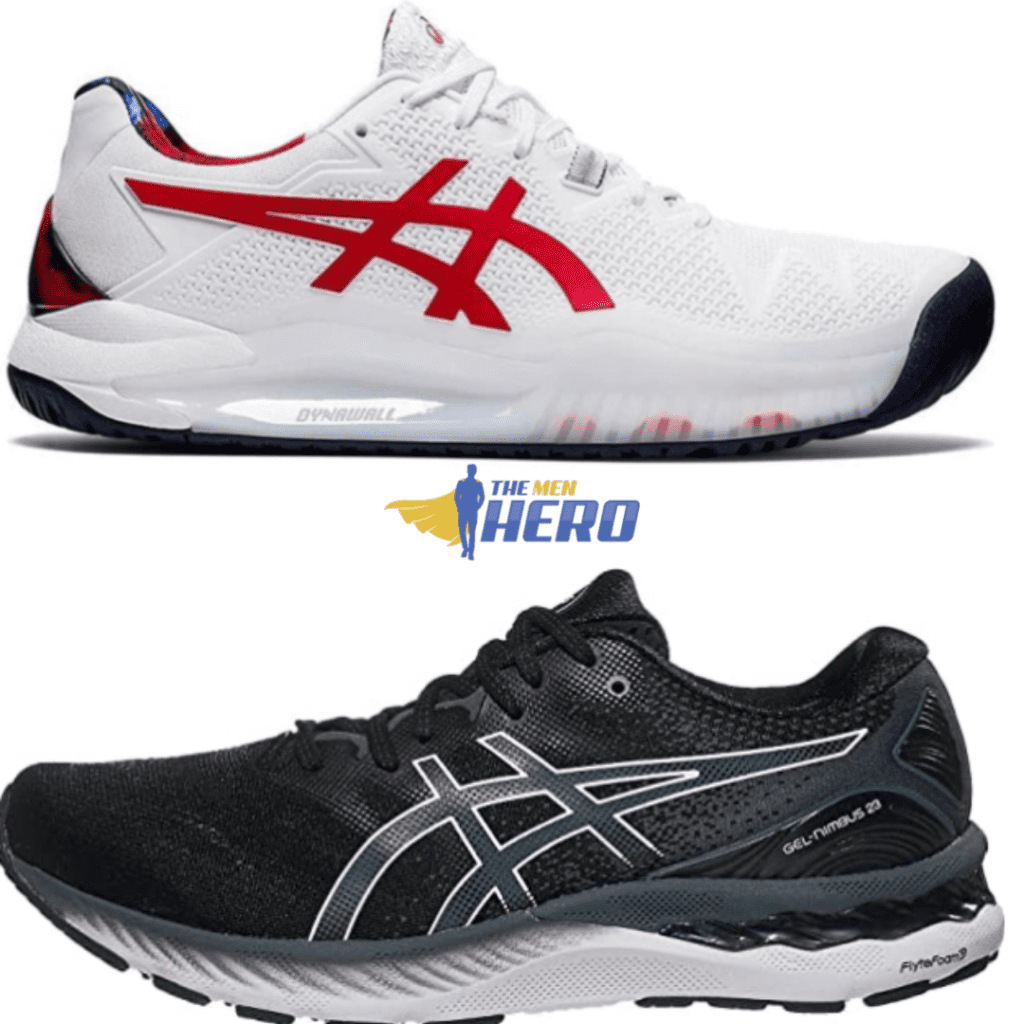
Tennis Shoe Cushioning
Tennis shoes offer less cushioning than running shoes because they absorb less shock during a match. This is because most of your weight when playing tennis is concentrated on your toes with every step you take. However, it is good to have a more cushioned tennis sneaker when playing on hard surfaces.
Read: Do New Balance Run Big Or Small?
My Experience: I have to say running with tennis shoes was a nightmare because I needed cushioning for my ankles and knees. After 2 km on my first run, I could feel the pain in my ankle, and it was even worse on the second and third times I ran. So I would say if you need cushioning when running, never choose a pair of tennis shoes, even if it’s a last-minute invite. I don’t feel this pain when wearing my running shoes.
Running Shoe Cushioning
If you are a neutral runner, that means you have the “correct” running pattern, and you need extra cushioning. It’s recommended that a running shoe have a good amount of cushioning in the heel, under the arch, and toe area. You place a lot more strength on your feet every time they hit the ground (the opposite when playing tennis). The more cushioning you need will depend on your needs as a runner.
Read: Do Asics Run Small Or Big?
My Experience: I have to say I don’t have anything wrong to point out about wearing running shoes when playing tennis in terms of cushioning.
Support & Stability
Support and stability are two features to stop the excess motion of your foot and ankle without restricting their movement when running or playing tennis.
Tennis Shoe Support & Stability
Tennis shoes prioritize lateral stability and support over cushioning because, in tennis, you need to execute many different moves quickly side-to-side. You move much more to the left or right than front and back, which is why lateral support is essential to prevent injuries. The closer the foot is to the ground, the more stable it will feel when moving laterally (that’s why tennis shoes have less cushioning).
Read: How To Stop Shoes From Rubbing The Back Of Your Ankle?
My Experience: The difference between playing tennis with a pair of tennis shoes and running shoes is abysmal for lateral support. I felt my ankle twisting a few times and my foot moving inside the shoe, making it difficult to move quickly sometimes.
Running Shoe Support & Stability
Running shoes prioritize more cushioning than stability and support because a runner tends to go in one direction, usually forward. Of course, you have some running shoes that prioritize stability and support (excellent for runners who pronate) over cushioning but are still not good enough for tennis.
My Experience: Since I am a neutral runner, I don’t need much support and stability on my shoes. Having that lateral support from the tennis shoes when running was making me uncomfortable. I felt it changed my running gait, preventing me from pushing my run a bit further.
Flexibility
As a general rule, the more flexible a sneaker is, the more your foot will be capable of moving naturally. In addition, the flexibility of a shoe can prevent additional stress to your foot and joints, avoiding injuries.
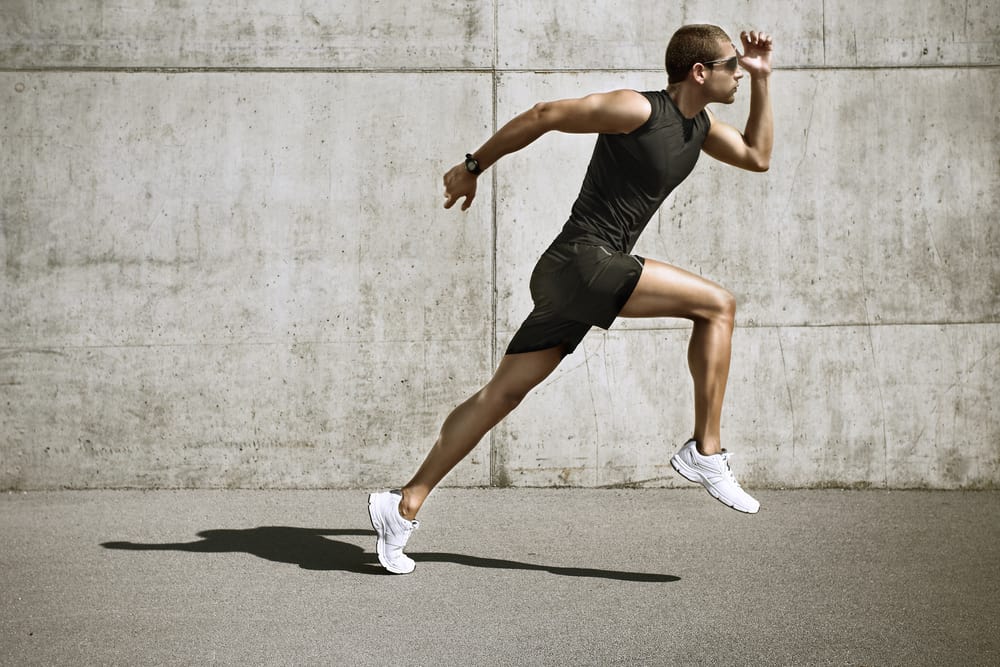
Tennis Shoe Flexibility
Tennis shoes tend to be less flexible than running shoes because they need to provide more support and stability on the sides and, therefore, are more rigid.
My Experience: I can say I appreciate the flexibility as a feature in a running shoe more than before since I ran in my tennis shoes. I didn’t feel that flexibility in the barefoot area when running, and that was bothering me.
Running Shoe Flexibility
Flexibility is a must in any running shoe (many times, it’s an overlooked feature) because you don’t want to have your foot restrained from its usual range of motion. When running, your feet need to be able to move freely because if the sole is too stiff, you can suffer from pain under your foot. Generally, a running shoe will flex on the forefoot.
Read: How To Tell If Shoes Are Too Big?
My Experience: As I said before, my feet were moving inside the shoe when playing tennis with my running shoes, and I needed them to be a bit more rigid.
Outsole
The shoe’s outsole is very important for running or playing tennis since it provides traction and the necessary protection from the surfaces it will be in contact with, preserving your feet. Every outsole can be made from different materials, but rubber and EVA are two of the most popular ones.
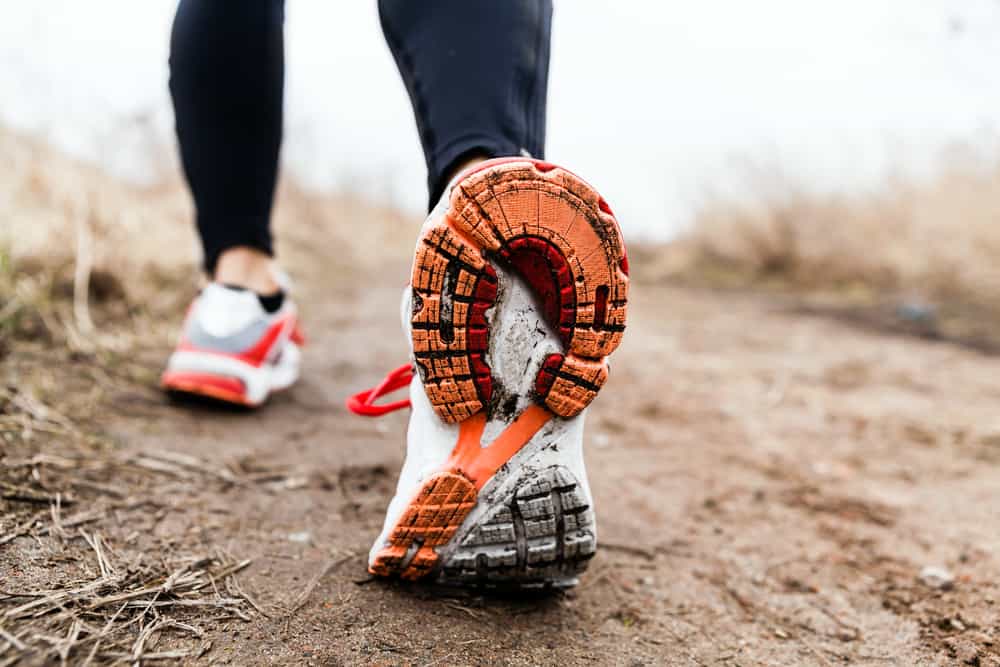
Tennis Shoe Outsole
Tennis shoes have a firm grip to avoid slippering and ensure it’s reinforced for stop-and-go action since you need to move quickly during a tennis match. In addition, tennis shoes can have different soles depending on the surface you play on. Most people play in hard courts that make the outsoles worn out much faster.
Read: Can You Wear Training Shoes Casually?
My Experience: Unfortunately, my running shoes were slipping when playing tennis, which could lead to some injuries. I would not recommend it.
Running Shoe Outsole
Running shoes offer less traction than tennis shoes. The grip is great at the beginning but can be quickly worn out. Running shoes can have different outsoles depending on the types of tracks you run. The chances of slipping in a running shoe are higher than with a tennis shoe.
My Experience: I do not have much to say about the shoe’s grip, but I did feel some resistance on the floor when running in my tennis shoes.
Durability
The durability of your running and tennis shoes can change due to several factors. When it comes to these two-sport activities, you need to consider some things to determine the lifetime of your sneakers. I see many people saying tennis shoes offer more extensive durability when compared with running shoes, but it’s difficult to tell due to so many factors and different characteristics of both activities.
Tennis Shoe Durability
Tennis shoes should be replaced every 45 to 60 hours of use. According to Senior Manager Merchandising and Innovation for Asics, on average, a pair of tennis shoes should last one year. Still, it all depends on the surface you play on, the climate, your playing style, etc. The less serious tennis player will swap his tennis shoes when the lines on the outsole disappear entirely or a hole emerges (the lifespan is much more significant in these cases).
My Experience: I don’t play enough tennis to give you a proper answer about the durability of my tennis shoes. They look very good after I played for less than 10 hours.
Running Shoe Durability
Running shoes should be replaced every 300 to 550 miles. Different running brands advise you on different distances. For example, Brooks and Adidas say you should swap every 300 to 500 miles and Asics between 450 to 500 miles. Many factors can influence the durability of your running shoes, like the weather, your running style, your weight, etc. Casual runners will make their running shoes more durable than they should.
My Experience: I do run often, and I usually swap my shoes every 450 miles since I tend to wear Asics running shoes. I would say they are very durable, and I change them when I start to feel less cushioning or have a hole on the heel, in the inside part of the shoe.
Weight
The weight of a pair of shoes can influence the way you run or play tennis. Tennis shoes tend to be heavier than running shoes, according to my experience. You can read how much shoes weigh here.
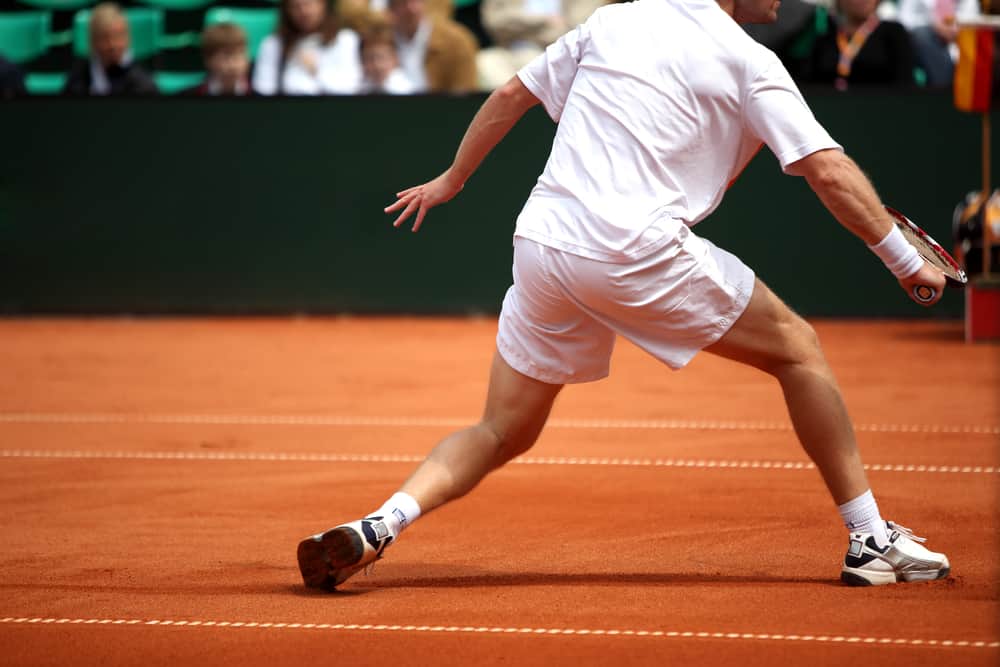
Tennis Shoe Weight
Tennis shoes can vary in weight from 310 grams to 470 grams in men’s shoes and 230 grams to 300 grams in women’s shoes. The weight of tennis shoes may not be as crucial for tennis players as the weight of a running shoe is for runners, but they still need to feel light to be able to shift directions quickly on the court.
My Experience: I don’t think the weight of my running shoe impacted my tennis match.
Running Shoe Weight
Running shoes can vary in weight from 200 grams to 380 grams in men’s shoes and 165 grams and 280 grams in women’s shoes. Heavy shoes can slow down a runner, so running brands use the lightest materials possible when manufacturing them.
Read: Best Walking Shoes For Overweight Men
My Experience: I also didn’t feel a lot of difference in the weight of my tennis shoes when running. If you have one foot with a tennis shoe and the other with a running shoe, you can tell which is heavier (the tennis one), but besides that, you can’t tell the difference.
Design
The design of running and tennis shoes differs because they are created to satisfy different needs. The sneakers have additional features to help you be a better runner or tennis player, and that’s why it is so important to wear the correct pair of shoes for the proper activity.
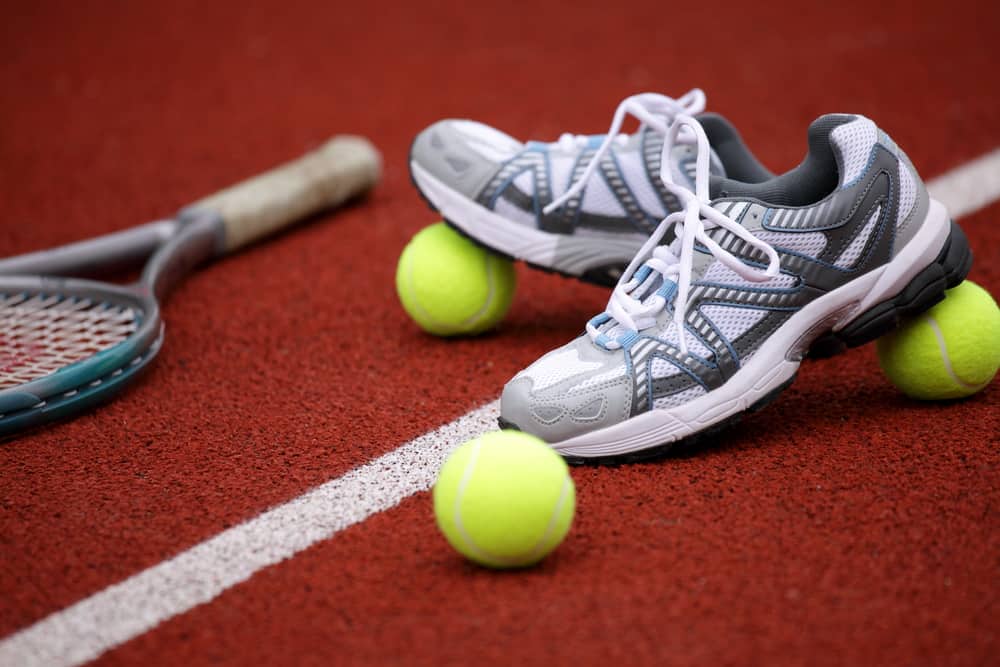
Tennis Shoe Design
Tennis shoes tend to focus more on neutral colors (you will find many white ones) and lateral support and stability. Tennis shoes are designed for a lot of side-to-side movement.
Running Shoe Design
Running shoes usually have a brighter color, but you can also find neutral colors. They tend to focus on cushioning and make the shoe lightweight. Running shoes are designed for one-direction motion (forward).
Common Questions About Tennis Shoes vs Running Shoes
These are the most common questions about tennis shoes vs running shoes.
Are Tennis Shoes Good For Running?
No tennis shoes are not suitable for running because they don’t provide the cushioning you may need, the lateral stability creates a stiffness that doesn’t allow your foot to move naturally, and the outsole is not designed for that. Running in tennis shoes is not comfortable after a few miles.
Can I Play Tennis With Running Shoes?
It would be best if you did not play tennis with running shoes because they don’t provide enough lateral support and stability, the outsole is not suitable for a tennis match, and you will ruin the shoes much quicker.
Do Running Shoes Make A Difference?
Yes, a good pair of running shoes that can satisfy all your needs as a runner can make a big difference in your performance. It can also prevent serious injuries from happening. Always ask for the advice of a runner expert in running stores where you can do a gait analysis to find out which is the most suitable running shoe for you.
Do l Need Different Shoes For Playing Squash And Running?
Absolutely! Both shoes are designed and manufactured to answer different needs and sports, so you should choose a pair of tennis shoes for racket sports and running shoes for walking or running.
Tennis Shoes vs Running Shoes
You can see that there are many differences between tennis and running shoes. Tennis shoes provide more stability, lateral support, less cushioning, and flexibility than a runner’s shoe would. Running shoes have the opposite characteristics to make them better suited for specific surfaces.
My advice is when you play tennis, wear a pair of tennis shoes and when you run, wear a pair of running shoes. This way, you will take the best from your shoes and avoid any potential problems.


